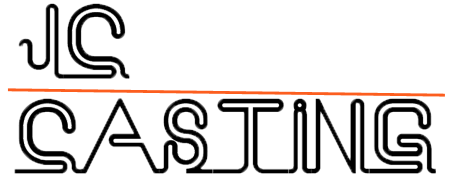Metal 3D printing and silica sol precision casting are two different metal forming technologies. Their main differences are as follows:
Principle
– Metal 3D printing: Based on the principle of additive manufacturing. By melting and stacking materials such as metal powder or wire layer by layer according to the three-dimensional model data, using heat sources such as laser and electron beam. Finally, a three-dimensional solid part is formed.
– Silica sol precision casting: It belongs to the traditional subtractive manufacturing process. First, a wax mold is made. Then a multi-layer silica sol refractory material is coated on the surface of the wax mold. The shell is made. After heating and melting the lost wax mold, a hollow shell is obtained. Then the molten metal is poured into the shell. After cooling and solidification, the shell is removed. The casting is obtained.
Precision
– Metal 3D printing: The precision is general. It can reach ±0.2 – ±0.5mm. It is suitable for manufacturing parts with complex shapes and general precision requirements.
– Silica sol precision casting: The precision can also meet higher requirements. The general dimensional accuracy can reach ±0.1 – ±0.5mm. But for some details of complex shapes, it may not be as accurate as 3D printing. Commonly used to manufacture various mechanical parts, automotive parts, etc.
Surface Finishing
– Metal 3D printing: The surface roughness is usually around Ra10 – Ra50μm. Subsequent grinding, polishing and other treatments are required to improve the surface quality.
– Silica sol precision casting: The surface quality is good. The roughness is generally Ra3.2 – Ra12.5μm. Some processes can achieve better results.
Material selection
– Metal 3D printing: A variety of metal materials can be printed. Such as titanium alloy, aluminum alloy, stainless steel, nickel-based alloy. But the current material types are still relatively limited. And the cost is relatively high.
– Silica sol precision casting: Applicable materials are widely used. Including various carbon steels, alloy steels, stainless steels, copper alloys, aluminum alloys, etc., covering almost all common casting metal materials.
Production efficiency
– Metal 3D printing: Single-piece production efficiency is high. No mold is required. Complex parts can be quickly manufactured. But for large-scale production, the efficiency is relatively low.
– Silica sol precision casting: Suitable for small and medium-sized batch production. The production cycle is long. Preliminary preparations such as mold making are required. But once the mold is ready, production efficiency will gradually increase.
Cost
– Metal 3D printing: The equipment cost is high. The material cost is also high. However, for complex structural parts, there is no need for mold manufacturing and other costs. There is a cost advantage in single-piece or small-batch production.
– Silica sol precision casting: The mold cost is high. But the material cost is relatively low. In small and medium-sized batch production, after the mold cost is amortized, the cost of a single part is acceptable.
3D metal printing equipment
Advantages
- Break through the limitations of traditional processes. Any complex structure can be manufactured.
- Rapid prototyping. Suitable for small-batch customized production.
- High material utilization. Reduce cutting waste.
Disadvantages
- High equipment and material costs. Poor economic efficiency of large-scale production.
- High surface roughness. Need to rely on post-processing to improve performance.
- Part size is limited by the molding chamber of the equipment (except for large equipment).
Silica sol precision casting equipment
Advantages:
- Suitable for medium-batch production. Low unit cost.
- Larger parts can be produced. Wide selection of materials.
- Mature process. High quality stability. (For example, aerospace castings require strict flaw detection).
Disadvantages:
- Complex process and long production cycle. Depends on molds.
- Limited structural complexity. It is difficult to achieve extremely complex or subtle features of the inner cavity.
- The shell preparation process consumes silica sol and quartz sand. A certain amount of waste is generated.
Production efficiency and cost
3D metal printing equipment
Efficiency
Single-piece small batch production has significant advantages. No mold is required. From design to molding can be completed in a few hours to a few days.
In mass production. Some equipment supports multi-part stacking printing. But the speed is still limited by layer-by-layer stacking.
Cost
- Equipment cost: high (hundreds of thousands to tens of millions of yuan. For example, industrial-grade SLM equipment usually exceeds one million yuan).
- Material cost: metal powder is expensive. (For example, titanium alloy powder is about 300~500 yuan/kg). And there is loss of unmelted powder recovery.
- Applicable scenarios: high added value, small batch, customized parts. (Such as aerospace prototypes, medical customized prostheses).
Silica sol precision casting equipment
Efficiency
- Wax molds and shells need to be made, and the process is long. (It takes several days to weeks from mold making to parts delivery). Suitable for mass production. (Such as automotive parts, valves, impellers).
- The mold (wax mold pressing) production cycle is long. (Mold opening is required, and the cost is high). But, the cost of a single part can be greatly reduced during mass production.
Cost
- Equipment cost: medium to low.
- Material cost: metal smelting loss is low. The cost of silica sol and quartz sand is stable.
- Applicable scenarios: medium batch. Complex structure. Parts with high surface accuracy requirements. (Such as pump body, impeller, aerospace structural parts).
Summary: How to choose?
3D metal printing is preferred: prototypes that need to be quickly verified, complex structures. Small batches, difficult materials to process (such as titanium alloys). Scenarios with high customization requirements.
Silica sol precision casting is preferred: medium to large batch production. Moderate structural complexity, high surface accuracy requirements. Cost-sensitive scenarios. (such as standardized mechanical parts).
